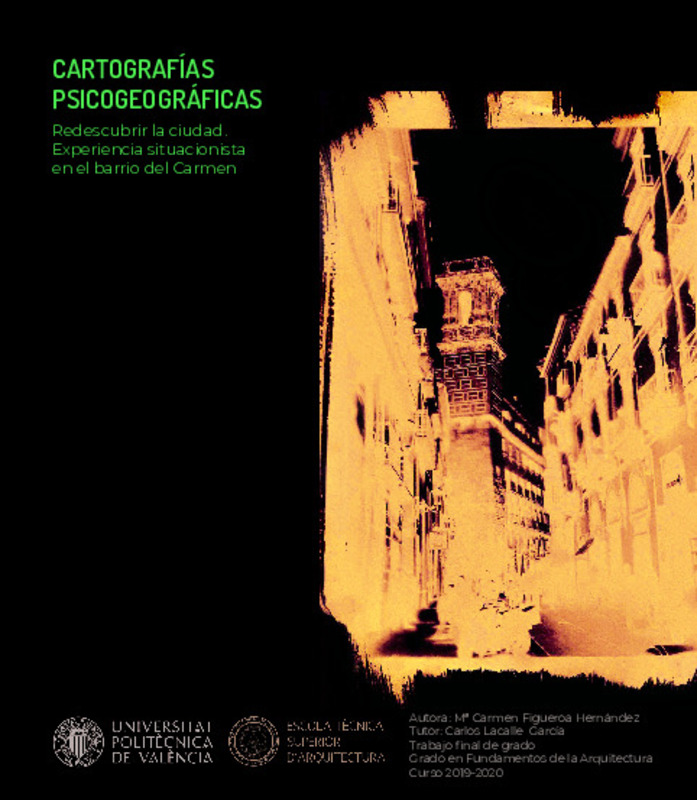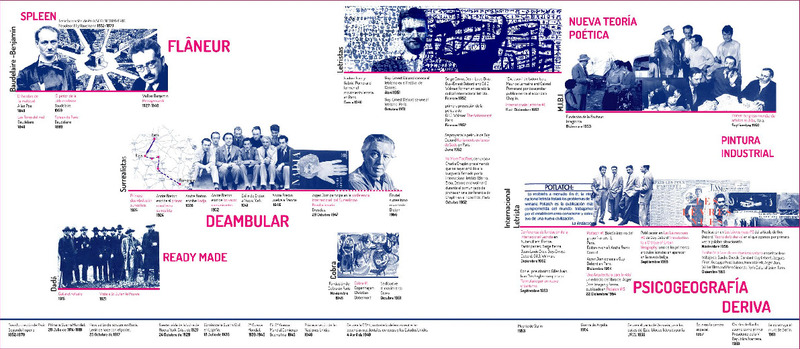JavaScript is disabled for your browser. Some features of this site may not work without it.
Buscar en RiuNet
Listar
Mi cuenta
Estadísticas
Ayuda RiuNet
Admin. UPV
Cartografías Psicogeográficas: Redescubrir la ciudad. Experiencia situacionista en el barrio del Carmen
Mostrar el registro completo del ítem
Figueroa Hernández, MDC. (2019). Cartografías Psicogeográficas: Redescubrir la ciudad. Experiencia situacionista en el barrio del Carmen. http://hdl.handle.net/10251/135249
Por favor, use este identificador para citar o enlazar este ítem: http://hdl.handle.net/10251/135249
Ficheros en el ítem
Metadatos del ítem
| Título: | Cartografías Psicogeográficas: Redescubrir la ciudad. Experiencia situacionista en el barrio del Carmen | |||
| Autor: | Figueroa Hernández, Maria del Carmen | |||
| Director(es): | ||||
| Fecha acto/lectura: |
|
|||
| Resumen: |
[ES] Este trabajo propone redescubrir la ciudad a través de un recorrido sobre la práctica artística-crítica del ¿paseo¿, que discurre desde su aparición en la capital francesa, ampliando el significado más allá de la ...[+]
[EN] This dissertation aims to rediscover the city taking a journey through the artistic and critical practice of the "walk", which runs from its appearance in the French capital, extending the meaning beyond the simple ...[+]
|
|||
| Palabras clave: |
|
|||
| Derechos de uso: | Reconocimiento - No comercial (by-nc) | |||
| Editorial: |
|
|||
| Titulación: |
|
|||
| Tipo: |
|
Localización
recommendations
Este ítem aparece en la(s) siguiente(s) colección(ones)
-
ETSA - Trabajos académicos [4687]
Escuela Técnica Superior de Arquitectura








